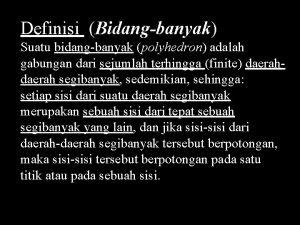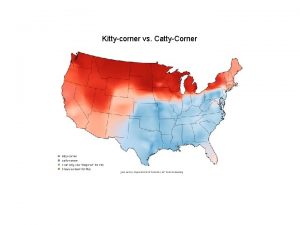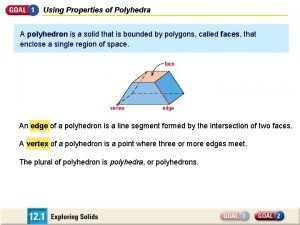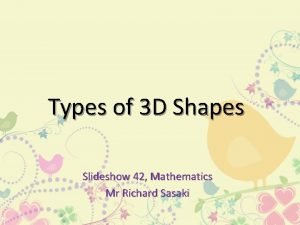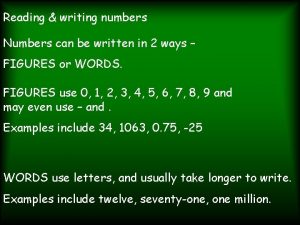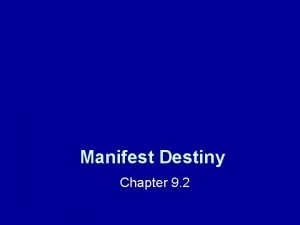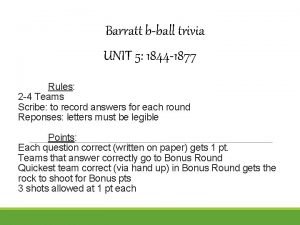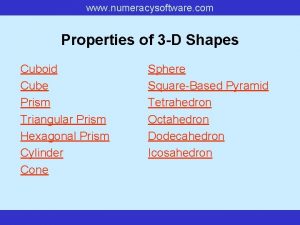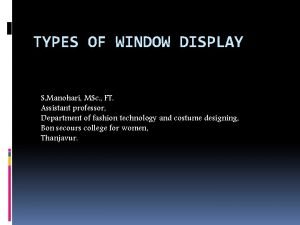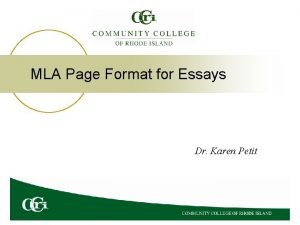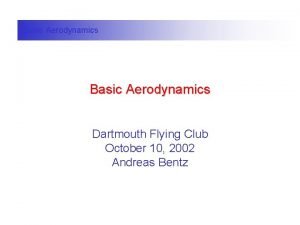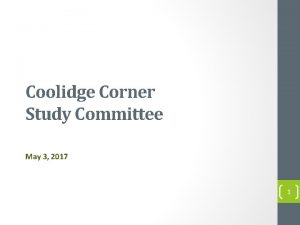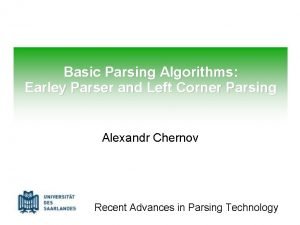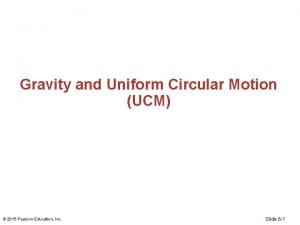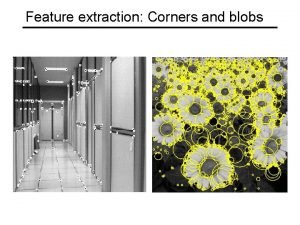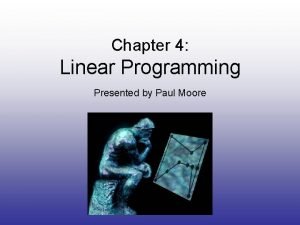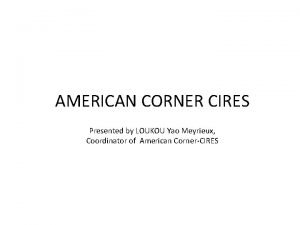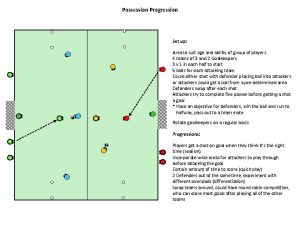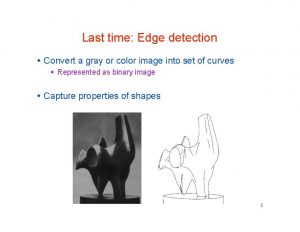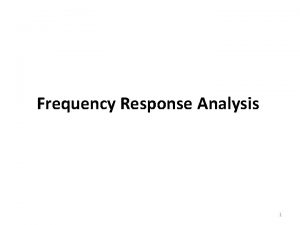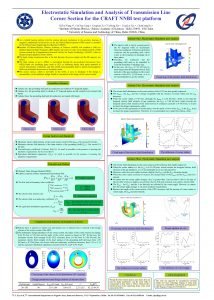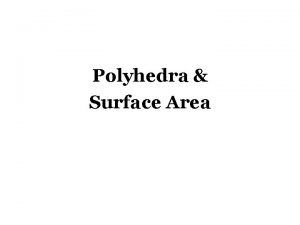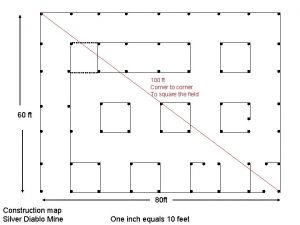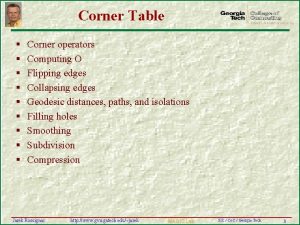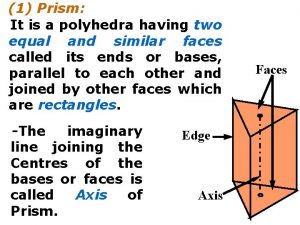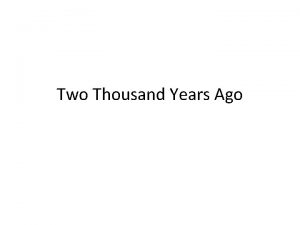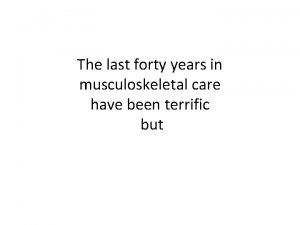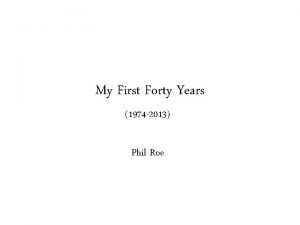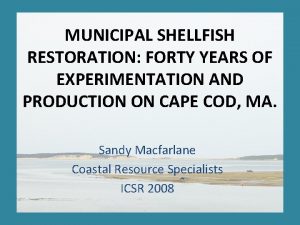Forty Years of Corner Polyhedra Two Types of




































































- Slides: 68

Forty Years of Corner Polyhedra

Two Types of I. P. • All Variables (x, t) and data (B, N) integer. Example: Traveling Salesman • Some Variables (x, t) Integer, some continuous, data continuous. Example: Scheduling, Economies of scale. • Corner Polyhedra relevant to both

Corner Polyhedra Origins Stock Cutting • Computing Lots of Knapsacks • Periodicity observed • Gomory-Gilmore 1966 "The Theory and Computation of Knapsack Functions“

Equations


L. P. , I. P and Corner Polyhedron

Another View - T-Space

Cutting Planes for Corner Polyhedra are Cutting Planes for General I. P.

Valid, Minimal, Facet

T-Space View

Cutting Planes for Corner Polyhedra

Structure Theorem- 1969

Typical Structured Faces computed using Balinski program

Size Problem : Shooting Geometry

Size Problem -Shooting Theorem

Concentration of Hits Ellis Johnson and Lisa Evans

Much More to be Learned

Comparing Integer Programs and Corner Polyhedron • General Integer Programs – Complex, no obvious structure • Corner Polyhedra – Highly structured, but complexity increases rapidly with group size. • Next Step: Making this supply of cutting planes available for non-integer data and continuous variables. Gomory-Johnson 1970

Cutting Planes for Type Two • • Example: Gomory Mixed Integer Cut Variables ti Integer Variables t+, t- Non-Integer Valid subadditive function


Typical Structured Faces

Interpolating to get cutting plane function on the real line

Interpolating

Interpolating

Gomory-Johnson Theorem

Integer Variables Example 2

Integer Based Cuts • A great variety of cutting planes generated from Integer Theory • But more developed cutting planes weaker than the Gomory Mixed Integer Cut for their continuous variables


Comparing



Integer Cuts lead to Cuts for the Continuous Variables

Gomory Mixed Integer Cut Continuous Variables

New Direction • Reverse the present Direction • Create facets for continous variables • Turn them into facets for the integer problem • Montreal January 2007, Georgia Tech August 2007

Start With Continuous p(x)

Create Integer Cut: Shifting and Intersecting

Shifting and Intersecting

One Dimension Continuous Problem

Direction • Move on to More Dimensions

Helper Theorem If is a facet of the continous problem, then (kv)=k (v). This will enable us to create 2 -dimensional facets for the continuous problem.

Creating 2 D facets

The triopoly figure

This corresponds to

The periodic figure

Two Dimensional Periodic Figure

One Periodic Unit

Creating Another Facet

The Periodic Figure - Another Facet

More

But there are four sided figures too Corneujois and Margot have given a complete characterization of the two dimensional cutting planes for the pure continuous problem.

All of the three sided polygons create Facets • • For the continuous problem For the Integer Problem For the General problem Two Dimensional analog of Gomory Mixed Integer Cut

xi Integer ti Continuous

Basis B

Corner Polyhedron Equations

T-Space Gomory Mixed Integer Cuts

T- Space – some 2 D Cuts Added

Summary • Corner Polyhedra are very structured • The structure can be exploited to create the 2 D facets analogous to the Gomory Mixed Integer Cut • There is much more to learn about Corner Polyhedra and it is learnable

Challenges • Generalize cuts from 2 D to n dimensions • Work with families of cutting planes (like stock cutting) • Introduce data fuzziness to exploit large facets and ignore small ones • Clarify issues about functions that are not piecewise linear.

END

Backup Slides

Thoughts About Integer Programming University of Montreal, January 26, 2007 40 th Birthday Celebration of the Department of Computer Science and Operations Research

Corner Polyhedra and 2 -Dimensional Cuttimg Planes George Nemhauser Symposium June 26 -27 2007

Mod(1) -1 B N has exactly Det(B) distinct Columns vi

One Periodic Unit

Why π(x) Produces the Inequality • It is subadditive π(x) + π(y) π(x+y) on the unit interval (Mod 1) • It has π(x) =1 at the goal point x=f 0

Origin of Continuous Variables Procedure

Shifting

References • “Some Polyhedra Related to Combinatorial Problems, ” Journal of Linear Algebra and Its Applications, Vol. 2, No. 4, October 1969, pp. 451 -558 • “Some Continuous Functions Related to Corner Polyhedra, Part I” with Ellis L. Johnson, Mathematical Programming, Vol. 3, No. 1, North-Holland, August, 1972, pp. 23 -85. • “Some Continuous Functions Related to Corner Polyhedra, Part II” with Ellis L. Johnson, Mathematical Programming, Vol. 3, North-Holland, December 1972, pp. 359 -389. • “T-space and Cutting Planes” Paper, with Ellis L. Johnson, Mathematical Programming, Ser. B 96: Springer-Verlag, pp 341 -375 (2003).
 Apa yang dimaksud dengan polyhedron
Apa yang dimaksud dengan polyhedron Catty corner vs kitty corner
Catty corner vs kitty corner Polyhedron properties
Polyhedron properties Regular polyhedra
Regular polyhedra How many sects of buddhism
How many sects of buddhism Forty two
Forty two Forty two
Forty two Two types of years
Two types of years Goat years to human years
Goat years to human years 300 solar years to lunar years
300 solar years to lunar years Four score and seven years ago meaning
Four score and seven years ago meaning It's six twenty
It's six twenty Does forty five have a hyphen
Does forty five have a hyphen Blood of war part 1
Blood of war part 1 Fifty four forty or fight
Fifty four forty or fight Forty niners apush
Forty niners apush Forty and eight
Forty and eight Francis bull great gatsby
Francis bull great gatsby Forty niner shops
Forty niner shops We visited two years
We visited two years Two years ago jenny was diagnosed with schizophrenia
Two years ago jenny was diagnosed with schizophrenia Summarise types of early years provision
Summarise types of early years provision Properties of triangular prism
Properties of triangular prism Mla top left corner
Mla top left corner Corner prediction
Corner prediction Types of window display in visual merchandising
Types of window display in visual merchandising Corner grounded delta
Corner grounded delta Negative corner fed room
Negative corner fed room In your mates corner
In your mates corner Be in your mates corner
Be in your mates corner Mla top left corner
Mla top left corner 1 inch margin
1 inch margin Short corner in hockey
Short corner in hockey The girl's father sat in a corner punctuate the sentence
The girl's father sat in a corner punctuate the sentence Kyle ran into his house
Kyle ran into his house Bioremediation is a triple corner process
Bioremediation is a triple corner process Conflict corner
Conflict corner Occupied bed conclusion
Occupied bed conclusion Ecicertinfo
Ecicertinfo Weld map symbols
Weld map symbols Classroom management toolkit
Classroom management toolkit Coffin corner aviation
Coffin corner aviation Sanders corner elementary school
Sanders corner elementary school Be in your mates corner
Be in your mates corner E urvarak kisan corner
E urvarak kisan corner The calvin coolidge corner
The calvin coolidge corner Symbolic probability rules
Symbolic probability rules Left corner parsing
Left corner parsing Plug or slot weld symbol
Plug or slot weld symbol Coders corner
Coders corner Corner mount cranes
Corner mount cranes Grammar corner
Grammar corner Lip corner depressor
Lip corner depressor Apparent weight formula
Apparent weight formula Turn right turn left go straight worksheet
Turn right turn left go straight worksheet Moravec detector
Moravec detector Corner blob
Corner blob Miss chris spanks
Miss chris spanks Corner point principle
Corner point principle American corner abidjan
American corner abidjan 4 corner debate
4 corner debate Weforceplay
Weforceplay Fueled by marcie hans analysis
Fueled by marcie hans analysis What is a corner kick in soccer
What is a corner kick in soccer Corner detection
Corner detection Corner detection
Corner detection Phase margin gain margin
Phase margin gain margin A heater is placed under one corner
A heater is placed under one corner Ya-hong xie
Ya-hong xie
